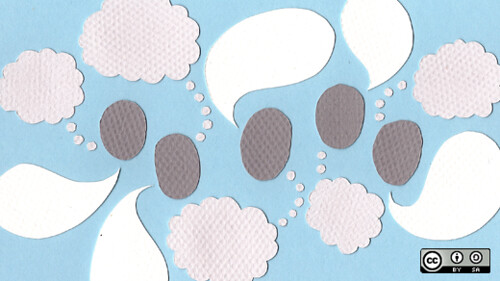By Justin Minion ’23
On a Wednesday evening in April of 2014, Jack Wright, the interim project manager for the Green Line Extension, stood on stage at a town hall meeting and faced an angry audience of residents from Somerville, Medford, and Cambridge. Jack informed the audience that funding for the much-anticipated Community Path, which was included in a package for the Green Line Extension, would need to be cut by approximately $80 million. Having the Community Path at street level was “a very grand idea, but also a very expensive idea,” said Wright.1 The Path would be reduced in length and various amenities, which would be built along the Path, would be scrapped. “We can’t envision not needing that $80 million,” said Wright referring to the cuts.2
This meeting bore like resemblance to the many that had come before it. A large and growing number of residents had been angry that the Green Line Extension had yet to open. The project had been proposed in the late 1990s. Construction officially began in 2008 and the planned year of completion was 2014. It was now 2014. None of the seven promised stations were open and operational. Hundreds of millions of dollars had been sunk into fees for consultants. The project was vastly overbudget, promises had not been kept, and residents were upset.
Bill White, president of Somerville’s Board of Alderman wanted a commitment from Jack Wright that there would be no more cuts. “If the [Somerville] board of directors presents to us some cuckoo truncated project… my advice to the mayor would be to go ahead, guns a-blazing, to pursue our rights under the Clean Air Act.”3 Other residents voiced similarly strong positions, “I think Somerville deserves a $100 million community path… Somerville has sacrificed for everyone else’s transit convenience,” said Mike Connolly of the Cambridge Residents Alliance, referring to the ongoing construction and road closures that had impacted many residents’ lives.4
One would reasonably expect that such acrimony is unusual for a Wednesday evening town hall meeting in Somerville, Massachusetts. However, these mini-feuds are merely small pieces of an unprecedented, time-consuming, and expensive political fight over the installation of a new light rail in the suburbs of Boston. This new light rail is today known as the Green Line Extension. The fights for and against the Green Line Extension, and the accompanying Community Path, have illuminated a deeply complex network of stakeholders in existence in Boston. This network of stakeholders spans from individual voters to non-governmental legal organizations to local, state, and federal authorities to entirely foreign enterprises. Each of these stakeholders (and many others) held a significant amount of power in determining the direction of the Green Line Extension. Each stakeholder often acted in the interests of their constituencies. However, some acted out of their own self-interest, occasionally ignoring the demonstrated interests of those that they represent.
This series of blog posts seeks to examine the development of the Green Line Extension by applying current theory regarding stakeholder dynamics in multiparty negotiations. To an outsider, the Green Line Extension was a glaring failure in the abilities of local government and is evidence that local transit agencies are not equipped to handle substantial industrial projects. Others speculate that the rapidly ballooning costs and significant delays could only be the result of systemic government corruption. In reality, I believe that many of the issues at the core of the Green Line’s woes are typical of multiparty negotiations and disputes. Of course I admit that some major problems were the result of technical and industrial problems. However, I believe that the extraordinary delays and cost overruns were predominantly the result of remarkably vocal, interested stakeholders and the interactions between each of these stakeholders.
* * *
Ever since the early 1920s, there has been support among the residents of Somerville, Medford, and Cambridge to extend Boston’s light rail system to those communities. On many occasions, Boston’s transit agencies studied the cost and impact of such a project. However, no Massachusetts governor – from Dukakis to Romney – was willing to support such a project. This suddenly changed in 1982 when the State of Massachusetts began planning its Central Artery/Tunnel Project in Boston, otherwise known as the “Big Dig.” One might wonder what the “Big Dig” has to do with the Green Line Extension. The “Big Dig,” buried a short strip of highway under the City of Boston, thereby increasing the vehicular capacity of Interstate-93. Increased automobile capacity certainly would result in negative air quality effects. Therefore, in order to comply with the Clean Air Act, the State of Massachusetts was required to commit to taking specific steps to reduce automobile traffic in other areas. One of these steps was to increase public transit infrastructure in the suburbs to the northwest of Boston – Cambridge, Somerville, and Medford.
Now, it was 1991. Ground had broken on the “Big Dig”, but none of the commitments made by the State of Massachusetts to reduce air pollution had so far been implemented. Transit infrastructure had been promised by the State of Massachusetts, but it appeared that little was being done. It is at this point that we meet one of the first major stakeholders in the conflict over the Green Line. This stakeholder is the Conservation Law Foundation, a not-for-profit environmental advocacy organization based in New England. The Conservation Law Foundation sued the State in 1991, which resulted in a settlement.5 The CLF was intent on holding the State to its promise to extend the Green Line. As a result, the settlement agreement required the State to appropriate funding for a new Green Line Extension in Somerville, Cambridge, and Medford. In 2005, after the MBTA’s five-year-plan noticeably did not include any funding for the Green Line Extension, the CLF sued the State again for breaching the 1991 Agreement.6 In 2006, the CLF and the State formed a new agreement, which would require completion of all seven stations of the Green Line Extension by 2014.7
Meanwhile, a class-action lawsuit had been filed on behalf of 11 residents with physical and cognitive disabilities against the MBTA (the transit agency for the City of Boston). The lawsuit had been filed by the Boston Center for Independent Living, a civil rights organization which advocates for residents with disabilities. The lawsuit, Joanne Daniels-Finegold, et al. v. MBTA, ultimately resulted in a settlement in 2006, which required the MBTA to make certain accessibility improvements to transit stations, subway cars, and buses.8 In an unexpected turn of events, the MBTA determined that it would not only comply with the settlement but would go above and beyond the agreement and “create a model of accessible transit for the entire country.”9 At this time, the MBTA had concurrently been in the planning stages for the Green Line Extension. As a result of the settlement, the MBTA determined that all new Green Line stations would not only have ADA-compliant ramps, but they would also all include elevators and other accessibility features.
* * *
The simplest form of a negotiation is known as a “dyad.” A dyad is a two-party negotiation in which the parties possess independent authority to come to a complete agreement. For instance, a dyad might arise when two individuals agree to purchase/sell a simple item. Assuming that the purchase and sale is a legal transaction, the parties together hold full authority to complete the transaction. In the public works context, dyads are much less common than in private dealings. Indeed, public works projects often involve at least three – and frequently many more – parties. In 2006, before a single meter of track had been constructed, the conflict over the Green Line Extension already involved multiple parties. Not-for-profit organizations such as the Conservation Law Foundation and the Boston Center of Independent Living employed legal tactics against state actors to achieve their interests.
Roy Lewicki, one of the authors of Negotiation, categorizes actors in multiparty negotiations as either: agents, constituencies, or audiences. When negotiators act as agents, they represent the interests of others, often referred to as “principals.” Agents are prohibited from considering their own personal interests, and instead must act out of the interests of their principals. Indeed, a major area of law in the anglosphere is devoted to studying this relationship. Constituencies are individuals, typically groups, whose interests are being advanced by a representative negotiator. Constituencies and their representatives do not create a principal-agent relationship and the representative may consider other interests. For instance, in the case of the Green Line Extension, while voters in Boston and the surrounding suburbs democratically elect their representatives, those representatives are not by law obligated to only advance the interests of the voters. In addition to a proposal’s support among voters, a representative may consider, for instance, the economic feasibility of a project and its disparate impact on a particular class of individuals.
Negotiations between agents or between representatives are often referred to as “front of the table” negotiations. For instance, negotiations between elected members of congress would be a “front of the table” negotiation. This is in contrast to “back of the table” negotiations, which occur between agents and their principals, or representatives and their constituents. (Docherty and Campbell, 2005). In the case of the Green Line Extension, “back of the table” negotiations frequently occurred as voters in Boston called their elected officials and transit executives and requested their presence at town hall meetings. Establishing coordination between “front of the table” negotiations and “back of the table” is often cited as a source of considerable difficulty in multiparty negotiations.
Parties that are not agents nor constituents are often labeled “audiences.” Audiences may vary across many different spectra. Lewicki provides a few characteristics by which audiences typically differ: identity (who they are and what they stand for), composition (the number and type of different points of view represented), size (which may affect their level of power), relationship to the negotiation (emotional ties, amount of informal control they can exercise over the negotiator), and role in the negotiation situation (readiness to try to influence directly the negotiator’s behavior, style, or content of communication).10 In the case of the Green Line Extension, the Conservation Law Foundation and the Boston Center for Independent Living could be accurately categorized as “directly involved” audiences. Directly involved audiences, in contrast to indirectly involved audiences, are parties that derive a direct benefit or loss from the outcome of a negotiation. By suing local government agencies and obtaining a favorable settlement, each not-for-profit organization was able to have an outsized impact on the direction and planning of the Green Line Extension.
Audiences often alter the behavior of negotiators. Audiences, whether direct or indirect, provide continuous feedback to the negotiator. Such feedback is usually verbal, such as an explicit exchange between the negotiator and an audience member. However, feedback may also be nonverbal, such as the nods of affirmation or the frowns of audience members in a crowd. To make things more complicated, verbal and nonverbal feedback can be directed at a number of different behaviors. Feedback can be directed at (a) the positions a negotiator has taken, (b) the concessions they have made, (c) the agreement(s) that has been reached, and (d) the behavior of the negotiator during the deliberations.11 Deciphering which behavior the audience is responding to can be a difficult exercise for the negotiator. For instance, an audience might approve of a negotiator’s positions, but nonetheless disapprove of the way they conducted themselves at the bargaining table.

The graphic shown to participants in the Trucking Game. Source: vivifychangecatalyst.wordpress.
Researchers have been able to demonstrate the impact that audiences have on negotiators. In a study conducted by Bert Brown titled “The Effects of Need to Maintain Face on Interpersonal Bargaining,” (1968) high school students played a one-on-one game versus an opponent. The students played a variation of Morgan Deutsch and Robert Krauss’s bargaining game. In Deutsch’s and Krauss’s game, participants are told that they individually operate a trucking company. The goal of each company is to make as much money as possible, by delivering as many goods as possible. Goods are delivered by one of two routes: (1) the company’s personal, but longer road, or (2) the shared, but much shorter road. In order for one participant to use the shorter road, the other participant would need to open their gate to allow passage. If the other participant did not open their gate, the shorter road could not be used. Thus, the optimal outcome required that both participants agree to open their gates when the other party was using the road.
Through their experiment, Deutsch and Krauss discovered that parties generally refused to play cooperatively. One must note that parties in this experiment were never instructed that they were competing with the other participant. The goal of the game was not to make more money than the other participant. Instead, the goal was simply to maximize profit for one’s own company; the outcome of the other party did not matter. Still, participants in this one-on-one game simply assumed that they were competitors. They assumed that the game was zero-sum. Deutsch and Krauss used their experiment to argue that humans gravitate toward a “competitive style” of negotiation rather than a “cooperative style.”
A few years after Deutsch and Krauss released their results, Bert Brown reconducted the study, but altered two crucial elements. First, Brown replaced one of the participants with a confederate, who was secretly working with the researchers. The confederate was provided with instructions to play the game aggressively and to exploit the participant whenever possible. This led to the participant making very little money in the game and to the confederate making lots. Second, Brown told the participant that an audience had observed the first round of the game. The participant was informed that this audience was a group of the participant’s “peers” and that they had observed the first round and prepared feedback for the participant. The feedback consisted of either: (a) commendation for playing the first round fairly and for taking a cooperative approach, or (b) criticism for looking weak and for being exploited by the other party. Once the participant had received this feedback, Brown had the participant and the confederate play another round of the game with the same rules.
One might expect that the participant would continue to take a cooperative approach, despite receiving negative feedback. Again the optimal strategy for the game is to always choose cooperation. However, Brown observed that this was not the case. Approximately 75 percent of the participants who received criticism for appearing “weak” in the first game, abandoned their cooperative approach and subsequently retaliated against the confederate. Note that retaliation would be very costly to the participant, as both players would always have to take the long road. However Brown discovered that participants seemed willing to bear these high costs in order to “save face” in front of the audience. Indeed, certain participants said they retaliated “in order to reassert their capability and strength.” (Rubin and Brown, 1975, p. 45).
Bert Brown’s results in “The Effects of Need to Maintain Face on Interpersonal Bargaining,” (1968) highlight the dilemma that negotiators often face when they are observed by audiences. Negotiators could take one of two approaches: (1) they could strive to preserve their own image, but perhaps incur significant costs in doing so, or (2) they could run the risk of tarnishing their image, but conserve important resources in the process. Brown’s study also suggests that a negotiator is more greatly influenced by a group of their “peers” than by a group of strangers. Bert Brown’s study illustrates both the impact of audience feedback on a negotiator’s behavior as well as the negotiator’s devotion to maintaining their reputation.
* * *
Just as Boston’s transit agencies were settling with the Conservation Law Foundation and the Boston Center for Independent Living, inter-agency disputes began to arise. In particular, animosity was budding in the relationship between the MBTA (the City of Boston’s transit agency) and the MassDot (the state’s transit agency). The MBTA had been the agency to spearhead the project since the early 1990s. However, as costs began to balloon, the MassDot intervened. Several interviews conducted after the fact disclosed that tasks were being passed back and forth between the two agencies as the project advanced. Regrettably, this relationship was not a coordinated division of labor. Instead, staffers from the MBTA “bristled” when planners from MassDot became more involved. In fact, some of the employees at the MBTA completely “disengaged from the project as MassDot took a greater role in [the] planning.”12 When asked about the source of such animosity, interviewees often cited what they perceived as a lack of trust and a lack of confidence in the expertise of the other agency. According to some, “Staff at both agencies didn’t always agree or appreciate input from the other.”13 That is, the MBTA had doubted the abilities of the MassDot, an agency that until this point primarily supervised the construction of state highways, to establish and operate a large public transit system.
Despite the MBTA’s objection to any intervention by State agencies, the MBTA also probably lacked sufficient capacity to manage a several billion-dollar transit project. Prior to 1990, the MBTA had established its expertise in planning and operating large-scale capital construction projects. However, under the supervision of Bill Weld, who was elected Governor in 1991, the State’s budget was cut significantly each year. These cuts resulted in the laying off of thousands of Boston’s public employees.14 As a result, between 2006 and 2012, as the Green Line Extension was in its construction phase, at most six employees at the MBTA were charged with supervising the entire billion-dollar project.15 In the words of one group of researchers, “[b]y 2005, on a day-to-day level, the MBTA no longer had the capacity to manage megaprojects like [the Green Line Extension] because the most experienced construction managers had left the agency or retired decades earlier.”16 As a result, it is not completely clear that one agency was more qualified to handle this project than the other. Interviews given after the fact seem to make clear that neither agency had sufficient internal capacity to oversee this project alone.
Perhaps there were other forces influencing the parties’ behavior. When Bert Brown recreated Deutsch and Krauss’s Trucking Game, he observed parties’ tendency to play competitively instead of cooperatively. This was true even in circumstances in which players’ outcomes were unrelated – in other words, the game was not zero-sum. Furthermore, when Brown subsequently added an audience into the game, he observed that competition and conflict between the parties increased substantially. Remarkably, parties would engage in retaliatory measures against the confederate, even if such a strategy would be enormously costly to the player or to their constituents. The presence of an audience can push the negotiating parties to engage in irrational, non-utility-maximizing behavior.
Since the early 2000s, the MBTA had been the subject of a consistent litany of public scrutiny. In 2006, it was estimated that on a typical weekday, only 62 percent of buses arrived on time, with the other 38 percent being either delayed or canceled. The on-time percentages were not much better for commuter trains. Residents also frequently voiced their concerns that MBTA employees (e.g., train conductors, bus drivers, and customer representatives) often treated riders “like freight” and took the stance that “the customer [was] always wrong.”17 Internal MBTA records of customer complaints accounted instances in which drivers and conductors would “refuse to open the door” for passengers or “yell at [them]” for entering through the wrong side.18
Residents who rode transit less frequently, but lived in either Boston or its surrounding suburbs, insisted that the MBTA’s woes were due to its dire financial health. Residents and riders noticed large capital projects that had begun, but whose benefits never accrued. For instance, approximately 60% of the MBTA’s capital budget was earmarked for the mitigation measures as a result of the “Big Dig.”19 These mitigation measures, which included the Green Line Extension, were estimated to cost approximately $3 billion, yet the MBTA had funding for only about half. Smaller outlays also frustrated residents. Approximately $220 million in brand-new train cars had been purchased. However, for years, those cars sat idle at a facility in Newton because they risked derailment if used on the poorly maintained city tracks.20 Ultimately, in 2007, the MBTA disclosed that the cost of servicing its $5 billion in debt was eating approximately 27% of its annual budget.21 This interest cost was in fact greater than the total amount the MBTA would raise from charging riders’ fares. The MBTA pleaded that the City of Boston allocate more funds to the MBTA. If not, the MBTA would be required to raise fare prices and cut services.
Between 2006 and 2014, efforts were made to alleviate the MBTAs financial woes. However, none of them truly fixed the problem. Services were often delayed, if not canceled, and riders frequently pivoted to other (typically private) means of transportation. Public criticism of the MBTA came to its climax in the Winter of 2014-2015 when New England experienced its coldest and snowiest winter ever on record. Multiple snowstorms had led to widespread and long-lasting outages and service disruptions. In April of the following year, MBTA General Manager Beverly Scott resigned. Governor Charlie Baker had initially tried to avoid the taint that was associated with the MBTA, stating that he had “no direct control” over the agency.22 However, as public frustration crested, Governor Baker convened a special committee to examine the agency’s operations, finances, and “general health.” At the same time, local news outlets were running stories with titles such as “Tough Days for the MBTA”23, and “The T’s Long, Winding, Infuriating Road to Failure”24. Other outlets directly criticized individual MBTA managers, suggesting that their compensation was undeserved and that employees were stealing funds from the agency through overtime work loopholes.25
At this point in the development stage of the Green Line Extension, the MBTA was under close scrutiny by several different, yet related audiences. The Governor of Massachusetts as well as the State Legislature were keeping close watch over the MBTA’s projects and financial outlays. Media organizations such as the Boston Globe, Boston Magazine, and WCVB5 were carefully watching the MBTA and arming themselves with stories to run in case things went sour. Finally, the residents of Boston and the surrounding suburbs as well as frequent transit riders were attending town hall sessions to voice their concerns as well as protesting outside of closed-door MBTA meetings.26 These audiences, individually and collectively, placed considerable pressure on the MBTA and its employees. As a result, the hostility that arose when the MassDot attempted to commandeer the project from the MBTA could perhaps be attributed to the enormous audience pressure that the MBTA had been facing at the time. Such an effect is interestingly consistent with Bert Brown’s study showing that audiences generally make negotiators more competitive and conflict-oriented.
1 “MBTA presents redesigned community path extension.” Josie Grove. The Somerville Times. https://www.thesomervilletimes.com/archives/66788
2 Id.
3 Id.
4 Id.
5 “A Victory 32 Years in the Making.” Conservation Law Foundation. https://www.clf.org/blog/mbta-green-line-extension-victory-30-years-in-the-making/
6 “And now… The Green Line Extension. For real, this time, the T promises.” Boston Globe. Feb. 2, 2022. https://www.bostonglobe.com/2022/02/02/metro/now-green-line-extension-real-this-time-t-promises/
7 Id.
8 “Impact of the Settlement Agreement” https://www.mbta.com/accessibility/history
9 Id.
10 Lewicki, Negotiation. 8th Ed. (2020). p. 357.
11 Lewicki, Negotiation, p. 355
12 Goldwyn, Levy, Ensari; The Boston Case: The Story of the Green Line Extension (NYU Marron Institute of Urban Management) (2021) (p. 22).
13 Goldwyn, The Boston Case. P. 22.
14 Goldwyn, The Boston Case. P. 23.
15 “Transit Costs Project: Lessons from the MBTA’s Green Line Extension.” YouTube. (2021) 28:00. https://youtu.be/gJ0BbJjE9cM?t=1667.
16 Goldwyn, The Boston Case. P. 23.
17 Brian Braiker. “The Terrible T.” Boston Magazine. (2006). https://www.bostonmagazine.com/2006/05/15/the-terrible-t/
18 Id.
19 Id.
[20 Id.
21 “Millions in MBTA debt could mean more hikes.” Boston Herald. 2007. https://www.bostonherald.com/2007/10/17/millions-in-mbta-debt-could-mean-more-hikes/
22 “Gov. Baker Huddles with Commuter Rail Operators. WBUR. 2015. https://www.wbur.org/news/2015/02/18/gov-baker-huddles-with-commuter-rail-operators
[23] Christina Pazzanese. “Tough Days for MBTA.” Harvard Gazette (2015). https://news.harvard.edu/gazette/story/2015/02/tough-days-for-mbta/.
24 David Scharfenberg. “The MBTA’s long, winding, infuriating road to failure.” Boston Globe. (2015). https://www.bostonglobe.com/metro/2015/02/14/transportation/U7vNqP861gKQFRly2jmjdL/story.html
25 “Highest-paid MBTA employee earned about $315,000 in 2015, including 2,600 hours of overtime.” WCVB5(ABC). (2015). https://www.wcvb.com/article/highest-paid-mbta-employee-earned-about-315-000-in-2015-including-2-600-hours-of-overtime/8229888
26 Adam Vaccaro. “MBTA approves fare hike amid chaotic protest.” Boston.com. https://www.boston.com/news/local-news/2016/03/07/mbta-approves-fare-hike-amid-chaotic-protest/
Cover Image: Green Line Extension Map by Pi.1415926535 (CC BY-SA 3.0)
I am grateful for the assistance of Sara del Nido Budish, who supervised this project. I am also grateful for the research done by the Eric Goldwyn, Alon Levy, and Elif Ensari at the Transit Costs Project at NYU. Finally, I would like to thank Alan Moore and Lynn Weissman, for their commitment to the Community Path and the City of Somerville. I am extremely grateful for Lynn’s willingness to engage with a complete stranger and to quickly respond to his Facebook messages.

Justin Minion is a 3L at Harvard Law School. He holds a Bachelor of Arts in French from Cornell University. Justin is particularly interested in public works projects. Justin’s favorite methods of transportation are bike, train, and gondola lift (in roughly that order). He lives in Somerville, MA.








